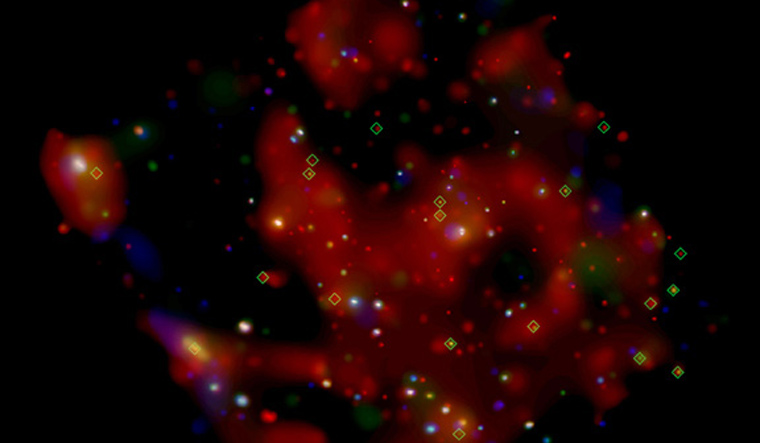Proof of elusive modestly sized black hole found by Hubble telescope
Astronomers confirm the presence of this third type of black hole
thanks: The Week

Astronomers have found the best evidence for a black hole of an elusive class known as “intermediate-mass,” which betrayed its existence by tearing apart a wayward star that passed too close.
Though there have been a few other intermediate-mass black holes (IMBH) candidates, researchers consider these new observations the strongest evidence yet for mid-sized black holes in the universe.
So far, scientists knew only of two sizes of black holes: “stellar” black holes, with masses about 10 times our Sun, and “supermassive” black holes located at the centers of galaxies, with masses ranging from millions to billions times our Sun. But eventually, evidence began to emerge that a mid-sized, “intermediate-mass” black hole also exists.
These so-called IMBHs are a long-sought “missing link” in black hole evolution. Weighing in at about 50,000 times the mass of our Sun, the black hole is smaller than the supermassive black holes that lie at the cores of large galaxies, but larger than stellar-mass black holes formed by the collapse of a massive star, the researchers said.
“Intermediate-mass black holes are very elusive objects, and so it is critical to carefully consider and rule out alternative explanations for each candidate. That is what Hubble has allowed us to do for our candidate,” said Dacheng Lin of the University of New Hampshire, principal investigator of the study.
Lin and his team used Hubble Space Telescope to follow up on leads from NASA’s Chandra X-ray Observatory and the European Space Agency’s X-ray Multi-Mirror Mission (XMM-Newton).
In 2006 these satellites detected a powerful flare of X-rays, but they could not determine whether it originated from inside or outside of our galaxy.
Researchers attributed it to a star being torn apart after coming too close to a gravitationally powerful compact object, like a black hole.
The X-ray source, named 3XMM J215022.4-055108, was not located in a galaxy’s centre, where massive black holes normally would reside.
The study, which has been published in the Astrophysical Journal Letters, raised hopes that an IMBH was the culprit, the researchers said.
However, another possible source of the X-ray flare had to be ruled out: a neutron star in our own Milky Way galaxy, cooling off after being heated to a very high temperature, they said.
Neutron stars are the crushed remnants of an exploded star.
Hubble was pointed at the X-ray source to resolve its precise location. The Hubble Space Telescope is a project of international cooperation between NASA and ESA (European Space Agency).
Deep, high-resolution imaging provides strong evidence that the X-rays emanated not from an isolated source in our galaxy, but instead in a distant, dense star cluster on the outskirts of another galaxy — just the type of place astronomers expected to find an IMBH.
Previous Hubble research has shown that the mass of a black hole in the centre of a galaxy is proportional to that host galaxy’s central bulge.
dedicated by
Kavignar Thanigai.

